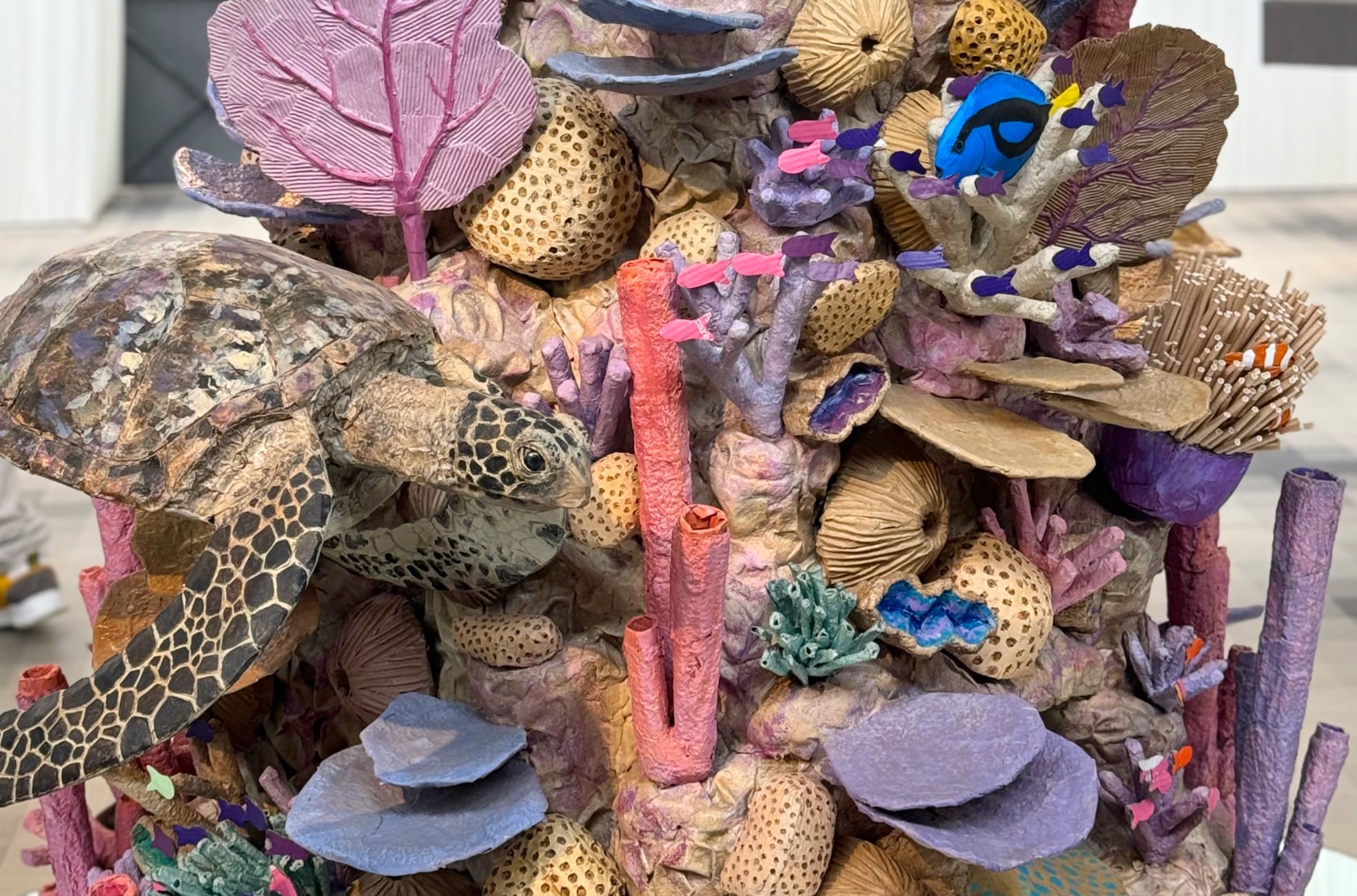This post was originally published on Colossal
For the past four years, London-based artist Josh Gluckstein has highlighted the potential of an everyday material—recycled cardboard—to bring animal sculptures to life (previously). In his most recent piece, “Reef,” he expands on individual portraits to create a meticulously detailed two-and-a-half-meter-tall marine habitat teeming with a variety of fish and coral.
“I fell in love with scuba diving ten years ago and was amazed that there was an entirely new world to discover underwater,” Gluckstein says. “I wanted to bring that experience to life on dry land.”

Gluckstein was invited to participate in Homo Faber 2024 in Venice, which this year traces the theme, “The Journey of Life.” Among the work of more than 400 artisans from around the world, “Reef” is Gluckstein’s most ambitious piece to date, featuring more than 50 different marine species.
Sea turtles, an octopus, clown fish, and a blue spotted ray are among the creatures that swim around a column of coral. “The piece celebrates the wonder and rich biodiversity of our oceans, while raising awareness for the fragility of—and challenges facing—our marine life,” Gluckstein says.
Homo Faber 2024 continues through September 30. Find more on the artist’s website and Instagram.
You might also enjoy Ghost Net Collective’s marine animal sculptures made from the salvaged ocean waste that endangers them.




Do stories and artists like this matter to you? Become a Colossal Member today and support independent arts publishing for as little as $7 per month. The article Josh Gluckstein Crafts a Teeming Reef from Recycled Cardboard appeared first on Colossal.





0 Comments